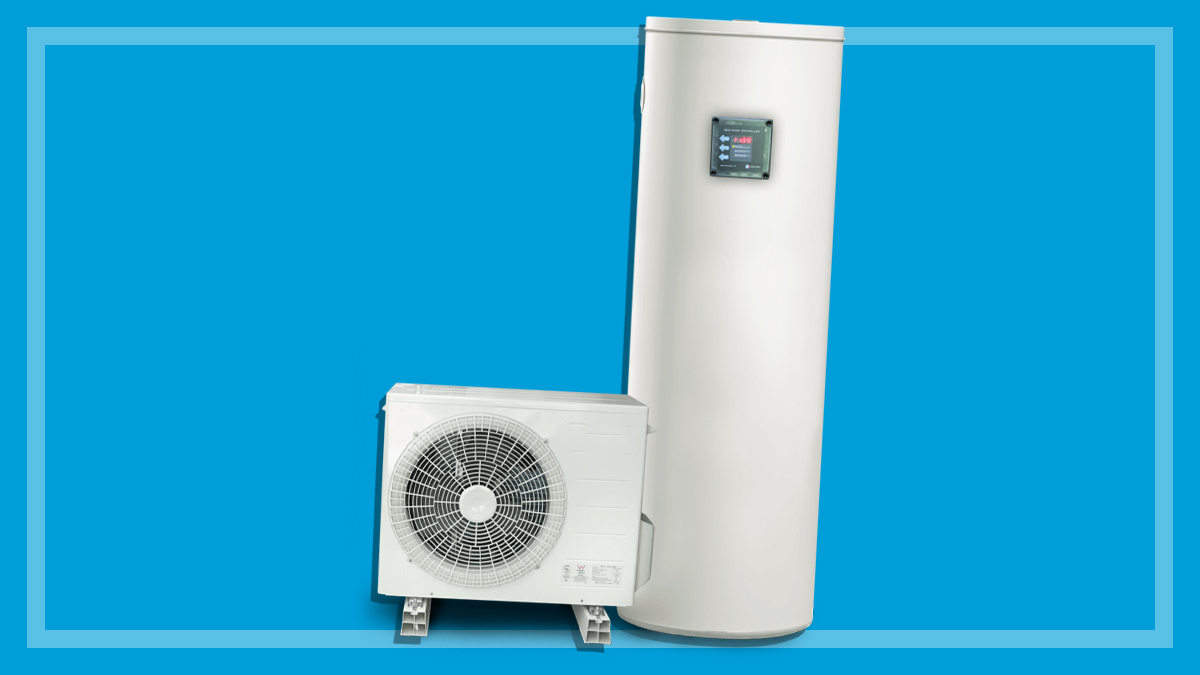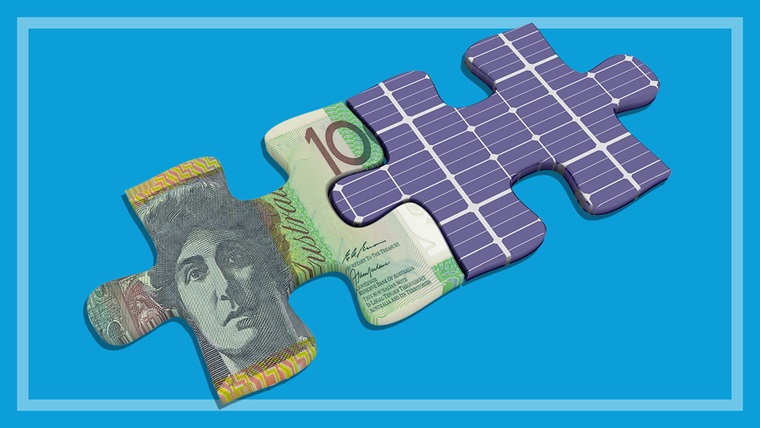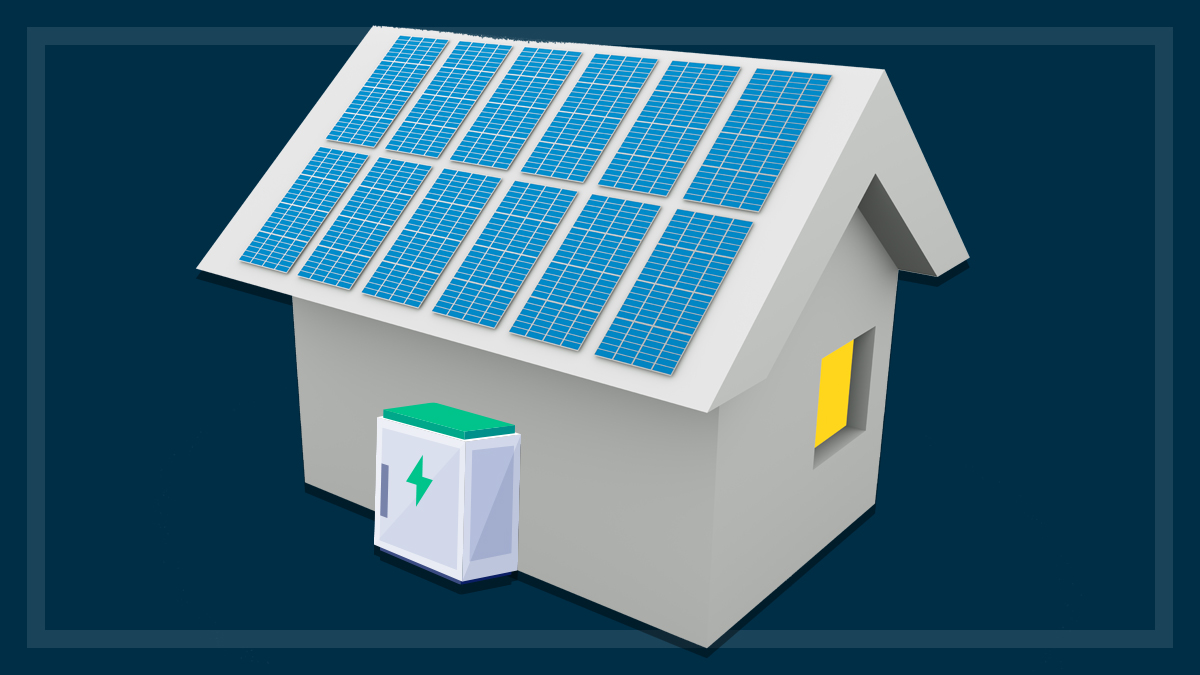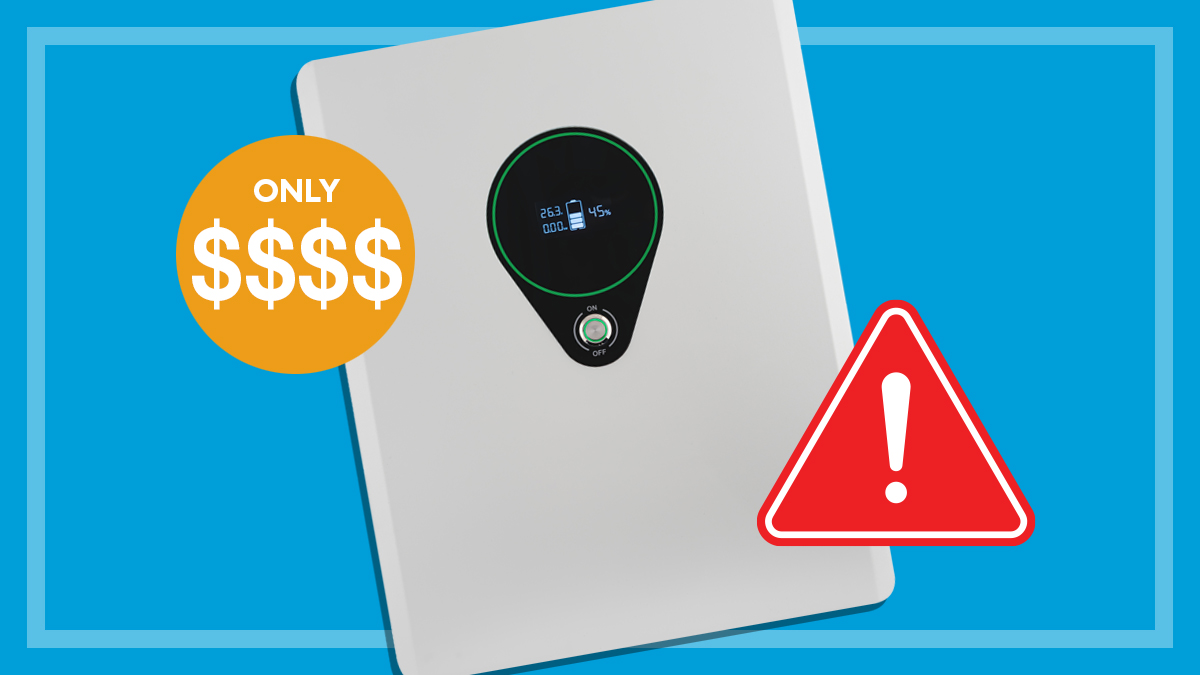Get our independent lab tests, expert reviews and honest advice.
Heat pumps explained: What are they and how do they work?

Need to know
- Heat pumps essentially move heat from one space to another and can be found in appliances like fridges and split-system air conditioners
- They're much more efficient than gas-powered or electrical resistance technologies
- While they can be expensive to install, some states and territories offer rebates for heat-pump systems, and they'll save you money on your energy bills
On this page:
- What is heat-pump technology?
- Main types of heat pumps
- How do heat pumps work?
- Why is heat-pump technology being used more and more?
- Reasons to install a heat pump
- Reasons not to install a heat pump
Heat-pump technology has existed for a long time, but over the past 30 years, you would’ve seen this term get used more and more. In a nutshell, heat pumps are a highly efficient way of moving heat from one place to another.
But how does this technology actually work? And given it’s not cheap, is it worth investing in? We explain the ins and outs of heat pumps so you can determine whether it’s right for your household.
What is heat-pump technology?
Heat-pump technology is currently used in a lot of different products, but the primary one you already have is in your kitchen: your fridge. Heat pumps are a very efficient way to move heat from inside the fridge to the outside, so it cools your food and keeps it safe for longer.
The other common heat-pump product you might have is an air conditioner, which will often have an outdoor unit (a compressor) which cools your indoor space by pumping chilled refrigerant to the indoor wall unit where it soaks up heat from the indoor air, and the cooled air is then blown back into the room.
Many states are offering rebates for heat-pump hot water systems
The warm refrigerant is then pumped back to the outdoor unit where the heat is blown into the outdoor air. The outdoor unit chills the refrigerant again and the cycle keeps on going.
Other less common products in Australia are heat-pump dryers and heat-pump hot water systems, both of which are quite expensive at the moment. But many states are offering rebates for heat-pump hot water systems, which will no doubt lead to an increased uptake over the next 20 years.
Main types of heat pumps
There are a variety of different types of heat-pump technology, but these are primarily related to where they source heat from: air, earth or water.
Air-source heat pumps
Air-source heat pumps move heat from the air around them and put it into a source, and a common example would be heat-pump hot water systems. This type of technology is the most common type in residential Australia and is used in split-system reverse-cycle air conditioners as well, where the heat is moved from inside a building to the outside, or vice versa – moving heat from outside the house to inside.
Air-to-air heat pump
Illustration showing how an air-to-air heat pump works, with a reversing valve, compressor and expansion valve.
Ground source heat pumps
Less common in residential Australia, this heat pump (also known as a geothermal heat pump) moves heat from the ground into a source by laying cables or other collector type arrays to gather heat from the surrounding soil, either in shallow trenches (which takes up a lot of room) or a deep hole in the ground (which is expensive).
Ground-to-air heat pump
Illustration showing how a ground-to-air heat pump works, with a compressor and expansion valve.
Water source heat pumps
Given the consistency of water temperatures, this can be the most efficient heat-pump technology. It takes the same process as ground source heat pumps, making use of cables laid into water to extract heat, but it’s rare that a property is located next to a constant flowing water source.
Air-to-water heat pump
Illustration showing how an air-to-water heat pump works, with an expansion valve, compressor, cold water inlet, exhaust fan and hot water outlet.
How do heat pumps work?
Unlike electrical resistance and gas-burning options, a heat pump does not generate heat. Instead it uses compressed and expanded refrigerant gas to capture heat and move it to another space.
It’s a fairly simple concept, which is why the technology has been around for so long, though there are several components to heat-pump technology and it’s become a lot more efficient over time, using better refrigerants.
Heat pumps are much more efficient than gas-powered or electrical-resistance technologies
And of course, one of the benefits of good insulation in your living space means you’ll need to use even less energy to run the heat pump, as it requires less energy to heat an already well insulated home.
Most heat pumps only act in one direction – they only heat, or they only cool. Reverse-cycle air conditioners have a reversing switch which means they can heat or cool.
This isn’t necessary for something like a fridge, where you only expect it to cool the compartment contents, so the heat pump moves heat from inside the fridge to outside the fridge (the coils at the rear).
Why is heat-pump technology being used more and more?
Since heat pumps are much more efficient than gas-powered or electrical-resistance technologies, the amount of heating or cooling you get is at least twice (and often three or four times) the amount of electrical energy you put into the unit.
For example, an air conditioner powered by heat-pump technology will usually deliver three or more units (usually measured in kilowatts, or kW) of energy for heating or cooling compared to the one unit of energy required to run the air conditioner.
That’s because it’s not simply using the electricity for heating. Thanks to the refrigerant gases in the heat pump, it’s actually utilising the free heat energy in the air itself. The heat that your heat-pump hot water system puts into the water tank mostly comes from the outdoor air.
Heating and cooling can make up 30–40% of your energy bill, so any change to a more efficient technology should save you money in the long run
Even on a fairly cold day, there’s plenty of available heat energy in the air (heat pumps can struggle in temperatures near zero or below, but there are models specially designed for cold areas). This is also why the compressor unit needs to be outdoors, or at least in a well-ventilated space.
Electrical resistance, like that of a portable heater or vented clothes dryer, will only get you a ratio of one unit of energy to one unit of heating or cooling energy, at best.
Gas is even worse than electrical resistance, as you get fewer units of energy compared to the amount of gas you’re putting into the product.
Because heat-pump technology is much more efficient, it can save you a lot of money, and combined with other energy-saving technologies like solar and battery technology, it can essentially wipe out a large portion of your energy bill.
Heating and cooling can make up 30–40% of your energy bill, so any change to a more efficient technology should save you money in the long run.
Reasons to install a heat pump
Cheaper energy bills
Do you like to save money on your energy bill? It’s generally a good reason to install a heat-pump system, whether that’s an air conditioner, dryer or hot water system. But that’s no reason to chuck out your existing system if it all works well, just that it’s worth considering when it’s time to replace it.
Combined with a solar and/or battery system, you can achieve cost-free heating and cooling, which is more difficult to do with electric resistance given the comparatively poor efficiency.
One product to heat and cool
If you install reverse-cycle air conditioning you can both heat and cool, instead of relying on separate appliances for your seasonal needs. Another potential benefit of this type of air conditioner is that it acts as a dehumidifier as well (cooling the indoor air condenses some of the moisture out of it in the process).
No gas needed
If you have gas and are relying on it for heating (space and/or water), changing to heat pumps can get rid of most of your gas bill with the remainder only spent on cooking (if you have a gas cooktop). You could even decide to switch all your appliances to electricity at that time and eliminate your gas bill completely.
Rebates
At the moment, some Australian states and territories, including Victoria and the ACT, are offering rebates for these types of systems (particularly heat-pump hot water systems) to those who are eligible, cutting the sometimes extravagant costs of this tech in half or to hardly any outlay depending on which rebates you can get.
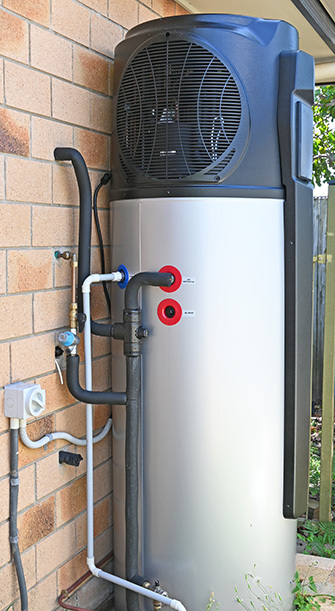
Reasons not to install a heat pump
Lack of space
If you’re in an apartment, semi or townhouse, you may not have space to install a heat-pump air conditioner or hot water system, so these may simply be out of reach for the moment. Over time we expect there will be technologies to replace existing instant gas systems for hot water, and smaller designs for smaller living spaces.
No insulation
If you have a draughty house, you may not reap the full benefits of a heat pump, as it tries to replace all the heat (or cool) that is leaking out of the house on a regular basis. The best way forward in this case is to seal the gaps and insulate your home first.
Electricity becomes even more expensive
Installing a heat pump might only keep you on par with electricity prices if they continue to exponentially increase, so lower bills are not a guarantee. However, gas prices could rise at the same time, so staying with gas heating won’t necessarily be a better option.
Expense of installation
If you’re unable to source rebates from your state, territory or the federal government, it might not make sense to buy and install a heat-pump system if the price is too high. You’ll need to make some calculations to see whether the investment makes sense, but even then, not everyone has a spare several thousand dollars to make an energy-efficient household.

